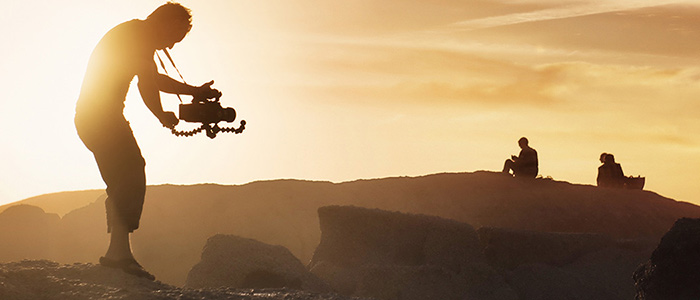What do Mickey Mouse, David Lynch, and the Dalai Lama have in common? They’ve all worked with Emmy-award winning producer/director Tony Perri.

Perri made San Diego his home following a pioneering career as a broadcast journalist, founding Surf's Up Studios, where he produces and directs citizen journalism pieces, documentaries, music videos, viral social media content and more. He’s taught at University of Colorado, as well as in and around San Diego. His new course, Backpack Journalism Workshop starts February 2nd, 2013, right here at UC San Diego Extension.
With a career as illustrious as Tony Perri’s, it’s only natural that he’d have a lot of stories. We recently interviewed him about his experiences in the field. Let us know what you think, and feel free to post any questions you may have for Tony (or us) in the comments below.
How did you get into the broadcast business?
When I was about 9 or 10 I used to pretend I was reading the news as an anchorman – using my dad's newspaper as the script and my younger brother as the "cameraman."
Growing up just outside New York City afforded me access to viewing some of the best newscasters around, and I would try and emulate them. It was no surprise to my folks and friends when I majored in broadcast journalism at California State University, Chico.
My first TV job was with KREX-TV (NBC) in Grand Junction as the weekend anchorman and weekday reporter. I learned all aspects of the business there, as I was required to shoot, edit, write, report and anchor. It was also a good place to make my early "bloopers" on the air – since we were such a small market.
After KREX, I moved on to Santa Rosa at KFTY-TV where I anchored the weeknight newscasts and was also a producer and reporter. Soon after, I helped launch Disney's first in-house TV news and broadcast division where I produced, directed and wrote hundreds of news, feature, and entertainment TV specials, reports, and live events. From Disney, I went on to KPIX-TV (CBS) in San Francisco, where I was a reporter, producer, writer and director for the long running nationally syndicated TV show, PM Magazine, and the popular local SF program, Evening Magazine. In the late 1990's I started my own TV and film production company.
What was your all-time favorite assignment?
When I was with Disney, I joined Walt Disney's nephew, Roy and many other Disney executives on a two-week trip to Russia where we brought four Disney films that had never been seen before in that country (at least legally!) for the first (and only) Disney-Russia Film Festival.
We also brought Mickey Mouse and traveled to Moscow, Leningrad and Tallin, showing a Disney movie at some very historic theaters. It was in Russia where I produced three international news stories about our visit – which were seen by more than 400-million viewers around the world. Every major network aired my reports, which included some classic shots of Mickey walking through Red Square and Gorky Park, greeting school children and Russian soldiers along the way.
Who are your three favorite interview subjects and why?
-
The Dalai Lama because he was so enthusiastic and childlike in his views and responses to questions. Plus, he makes you feel really good when you're around him.
-
George Lucas because of how ordinary and low-key he is. While he's a brilliant filmmaker and story-teller, he's really just a guy from Modesto and has never lost his a feel for his roots and where he's from.
-
Ronald Reagan because he loved to talk. I worked with him twice during my time with Disney, as Reagan was one of three hosts who starred in the ABC-TV special on opening day at Disneyland in 1955. Reagan made me feel at ease from the moment he told me that he liked my argyle socks just before I started the interview with him.
How did you get into iReporting?
While teaching at the University of Colorado and living in Denver, I was there for the 2008 Democratic National Convention. There were large-scale protests and marches from the State Capitol to the Convention Hall/Pepsi Center.
I was in the thick of it and filmed some intense footage of the protestors, and landed some very interesting interviews. CNN aired my footage on their fledging iReport digital site, and I was subsequently interviewed live on CNN Headline News to talk about my experience as the only iReporter at this major event.
See the raw footage as well as the full, produced CNN report.
What are three things people can do to enter the field?
In today's immediate news world, almost anyone can be an iReporter and backpack journalist.
-
Always have a video camera with sound recording ready to go at any time.
-
Attend major events and look for places and things that have the potential for a story.
-
Be factual, truthful and accurate in the way you convey a news story to the public – that includes airing on broadcast as well as digital platforms.
Learn how to generate and produce news stories and features for the public, including how to choose topical news and entertainment stories, write the story, and how to effectively and professionally complete the process of video production, post-production, uploading, and distribution of digital news videos in Perri’s upcoming course. The Backpack Journalism Workshop is one course in a rapidly expanding roster of video courses at UC San Diego Extension. For video courses and programs, please visit our website.